24 indoor planter ideas to instantly brighten up your home
Elevate your interior scheme and show off your favorite houseplants with these gorgeous indoor planter ideas
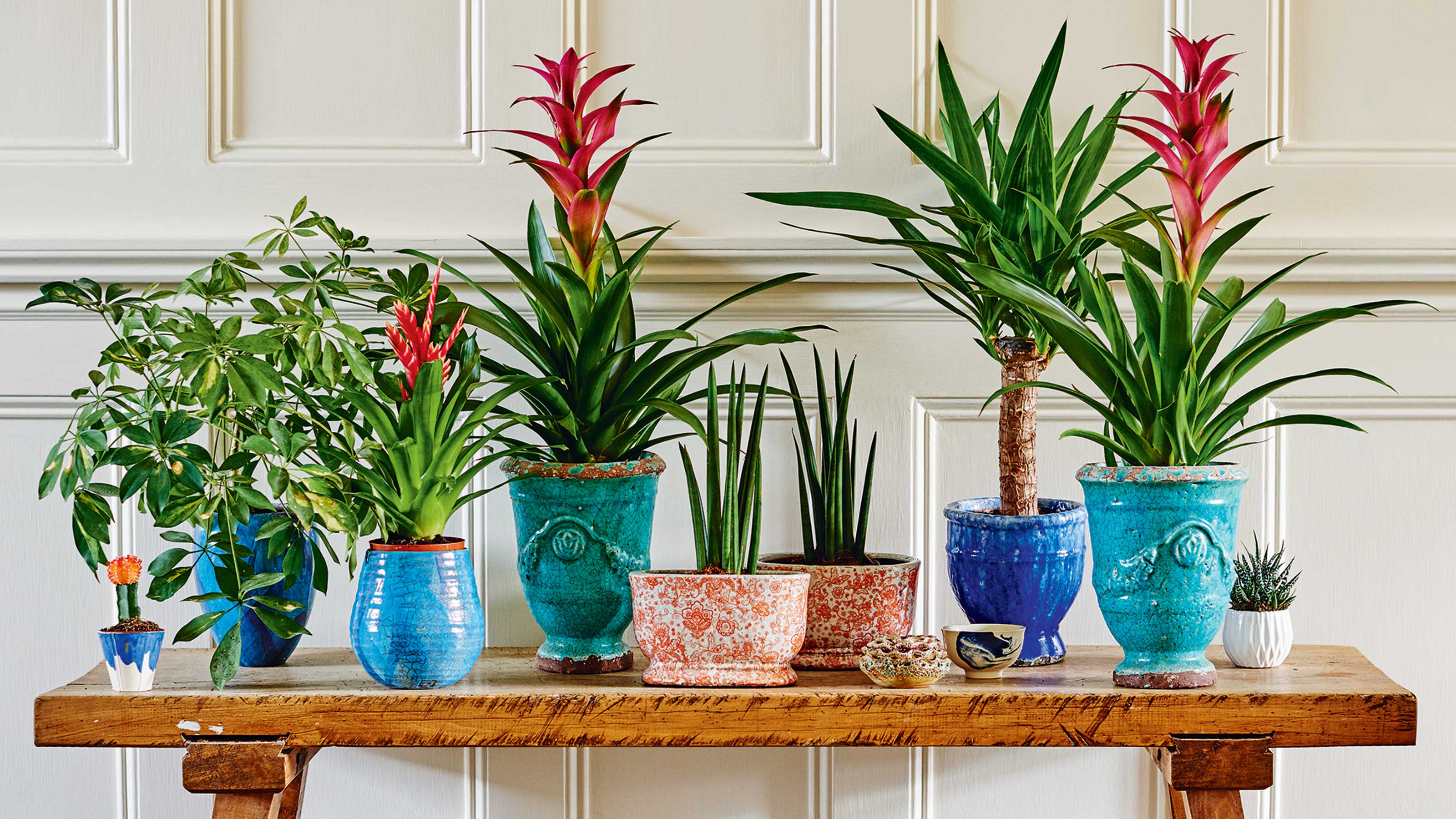

Looking for indoor planter ideas to boost the jungle vibes in your space? Look no further – we're here to help.
Greenery boosts your mood, oxygenates your space and adds an organic aesthetic, too. And when there are so many planters to choose from, it makes sense to give your best indoor plants the most beautiful places to reside.
From classic and elegant to quirky and unexpected, indoor planters facilitate a way to bring the entire room together. An effortlessly stylish planter can easily become an integral part of your interior design, and you can make a definitive statement with a dramatically designed planter, too.
Indoor planter ideas to inspire your at-home designs
Brendon Haxby, the co-founder of luxury interiors retailer Naken.co.uk, says it’s no surprise that homeowners are looking for stylish indoor planter ideas to incorporate more greenery in the home.
'There has been a surge in beautiful indoor planters with products available in a plethora of shapes, sizes, finishes and designs. From bold, patterned pieces to subtle beauties that slot into existing interior schemes, there is a wealth of choice.'
As with everything interiors-wise, Brendon says to go with your gut when it comes to choosing a planter. 'Choose the ones that will bring you joy,' he suggests: 'Curate a collection that reflects your personality and you won’t go far wrong.'
1. Make use of your space with hanging planters
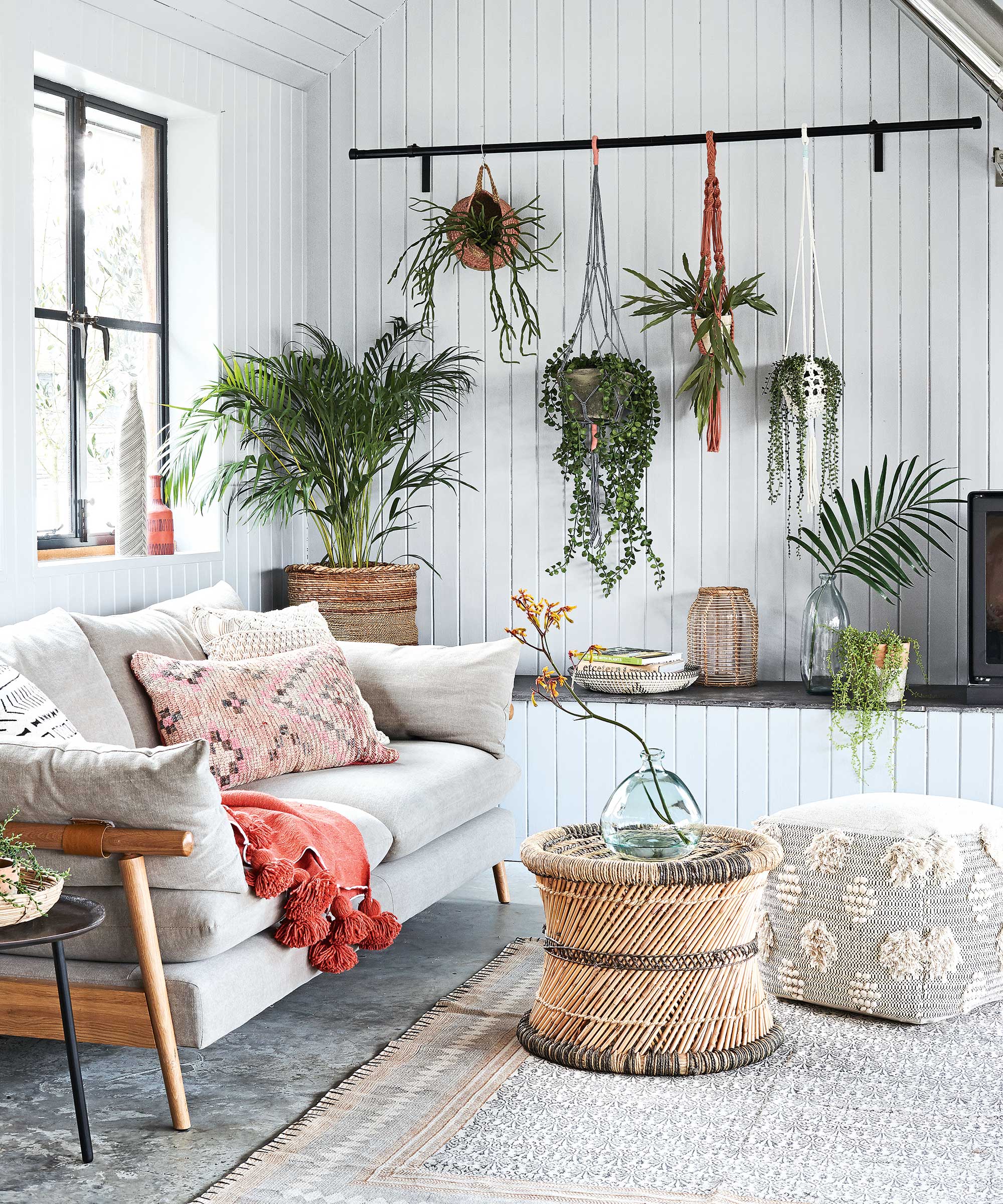
Create a botanical display up high
Who doesn't love a hanging planter? These constructions are beautiful in their own right, and can easily become the new homes for the best indoor hanging plants.
Wayfair’s Resident Style Advisor, Nadia McCowan Hill, suggests creating a little drama overhead by suspending planters at various staggered heights from the ceiling. 'You can fill these with succulents, or the plucked flowerheads of some vibrant faux blooms for a serotonin boost,' Nadia adds.
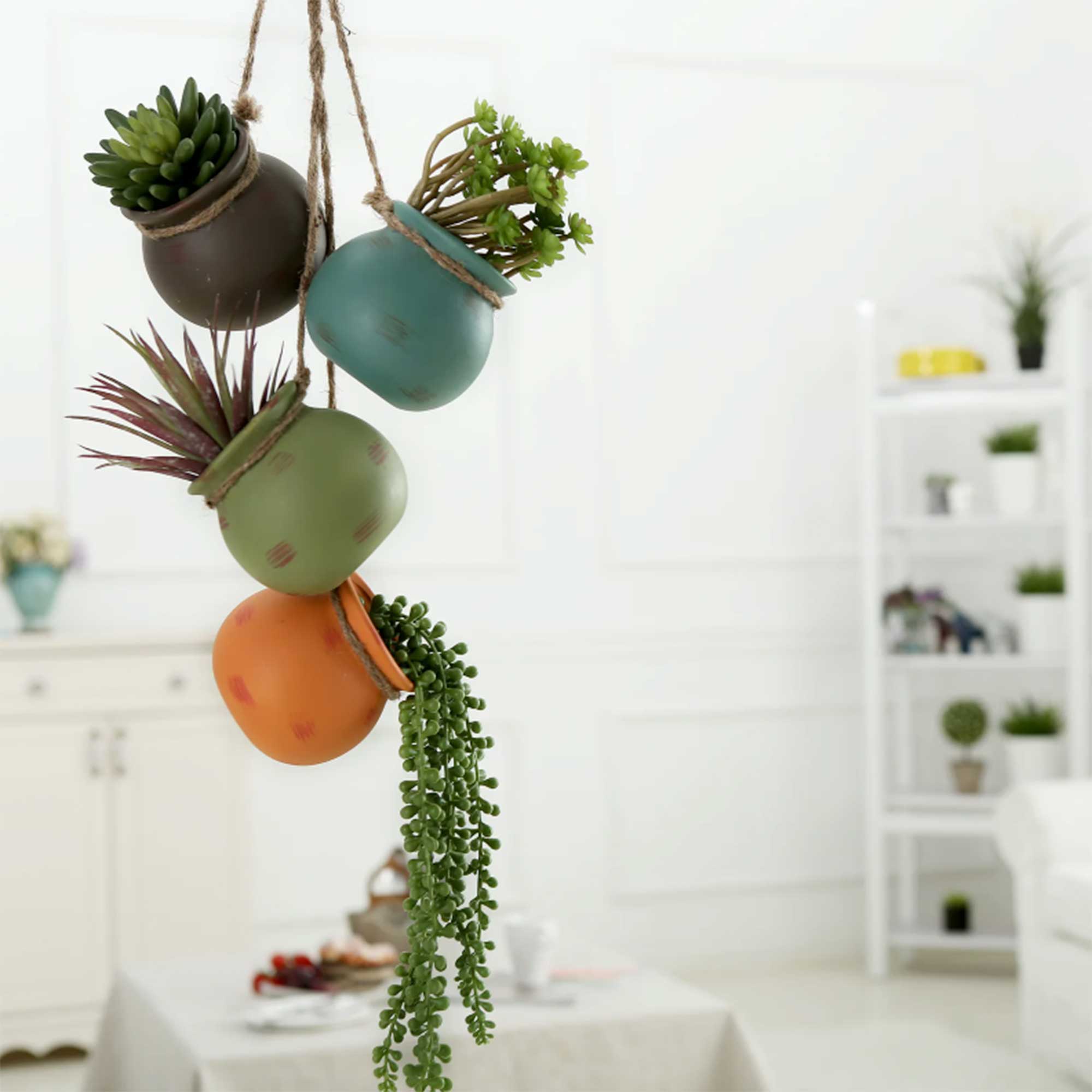
Why have one hanging planter when you can use four? This gorgeous ceramic set is tilted to a perfect display angle, and hangs from a twisted jute rope that lends a rustic feel. Use these planters for succulents, cacti and vine-like houseplants.
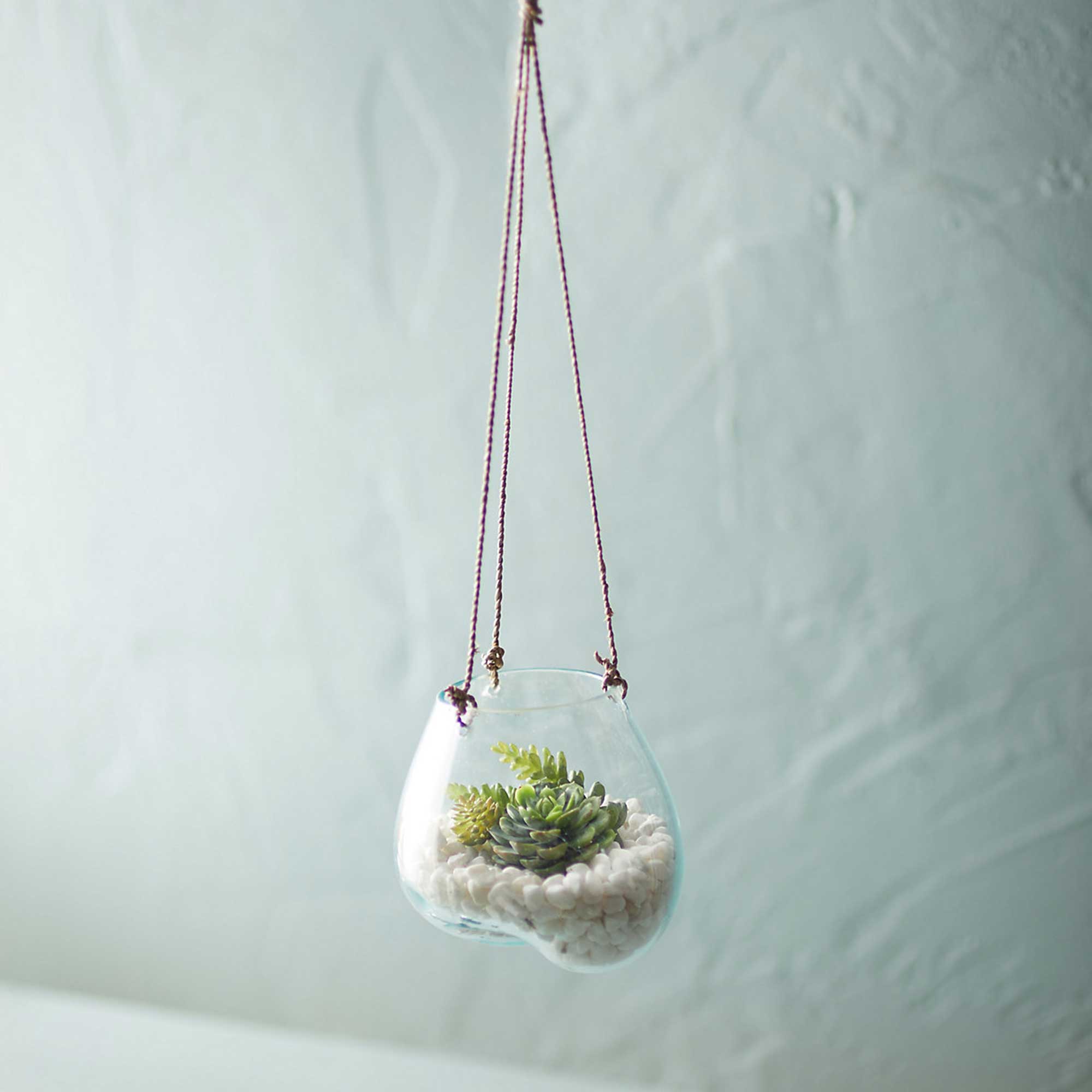
A beautifully elegant hanging pot, this clear glass planter at six inches high is a perfect home for a tiny succulent garden. It's suspended with natural jute rope via three holes at the rim of the glass. There are no drainage holes, so water carefully.
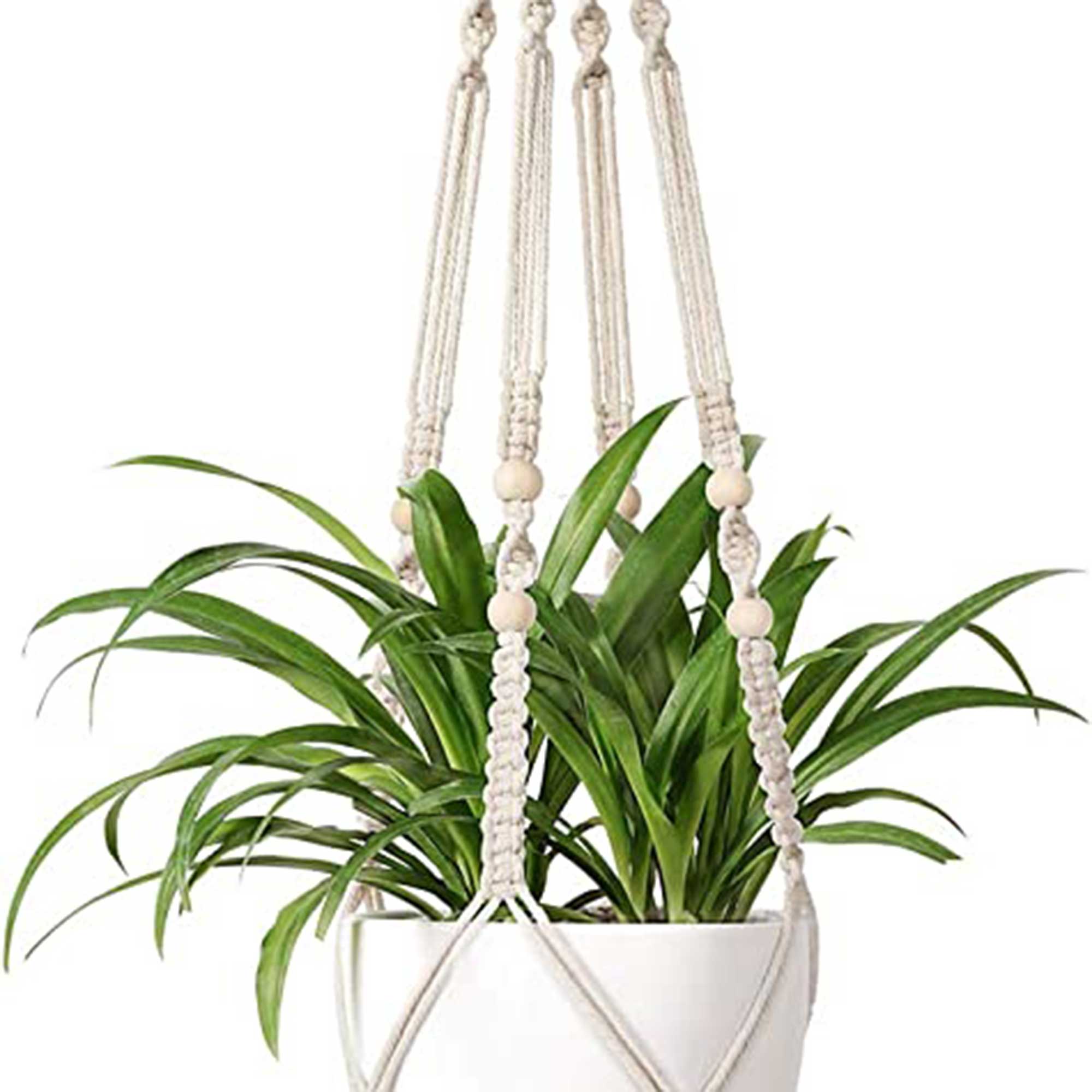
A vintage-style macrame planter is a gorgeous addition to your home: they're easy to hang and are able to hold a variety of different pot sizes. We love the delicate features of this Mkono planter, with wooden beads and knotted patterns.
5. Use sustainable planters for an eco-friendly feel

Recycled planters from Ivyline have a chic and minimal look
Using planters made from recycled materials is a great way to keep otherwise unwanted waste out of the landfill. Sustainable planters can be made from cork, bamboo, recycled glass, and even maritime plastic, including fishing nets, ropes and trawls.
Patty Willems at Elho, says: 'Sustainable planters offer an array of benefits compared to those made from alternative materials.' Not only can sustainably-made planters be high-quality, they can also be frost-proof, UV-resistant and colorfast, she says.
This means that they continue looking good as new, no matter how harsh the elements may be, throughout the year: they're definitely worth considering for your outdoor garden planter ideas, too.
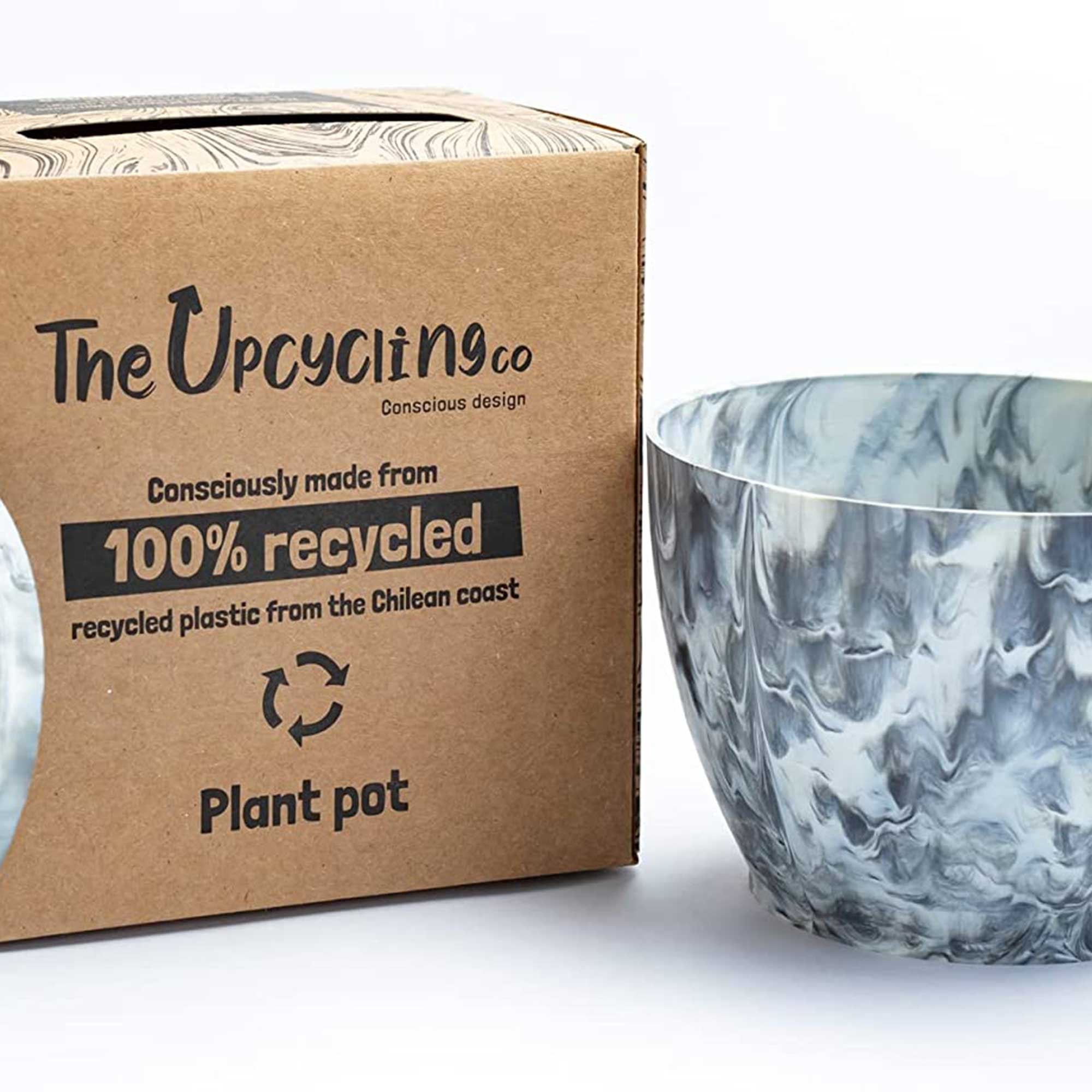
100% recycled plastic from the Chilean coast is the name of the game for these UpcyclingCo planters. Each product has an entirely unique appearance thanks to the mix of recycled plastics used, and an additional benefit is their durability.
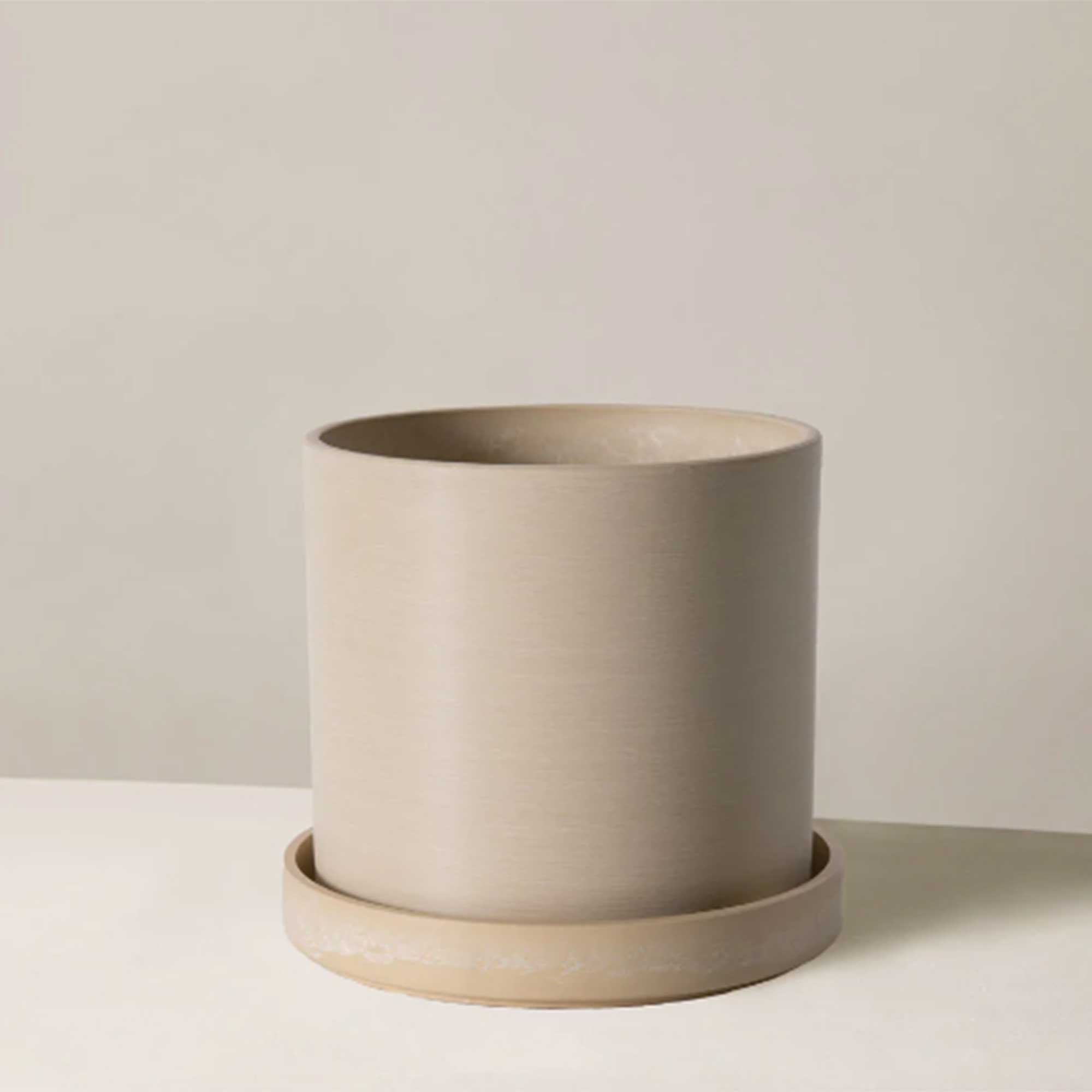
The Sill's upcycled planters are beautifully modern and understated in appearance. They come in three sizes, and are made from a variety of unwanted by-products from agricultural processing including coffee bean husks and bamboo fibers.

Did you know natural bamboo fibers can look just like plastic? These wide, 7in planter bowls in seafoam green are entirely plastic-free, yet they have the strength and matte appearance of a less eco-friendly product.
9. Choose color-themed planters to tie a space together
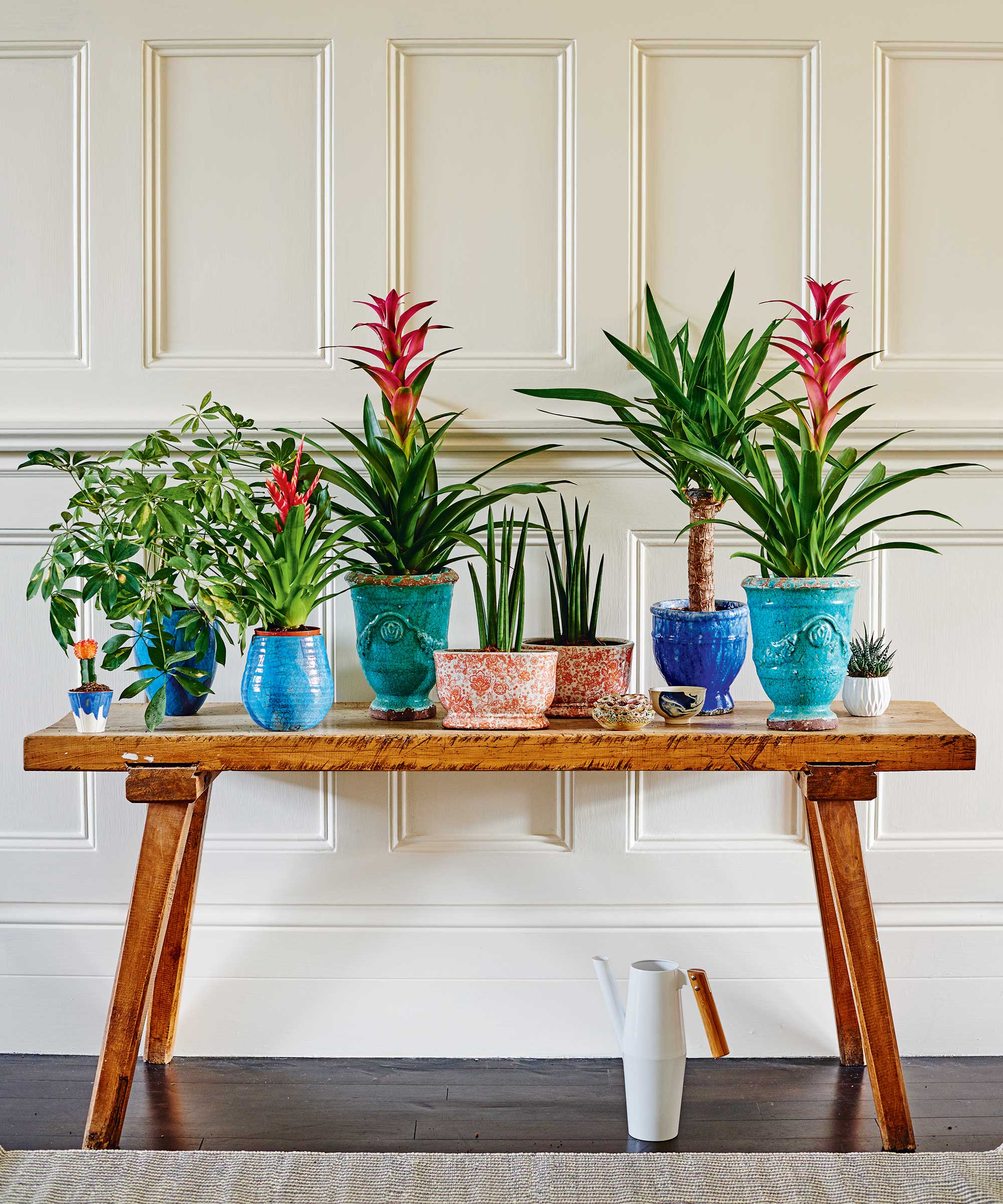
Embrace color and pattern in your indoor plant display
Whether you're displaying kitchen plants or adding greenery to your bathroom, why not opt for a set of color-themed planters to really tie the room together?
Sam Hood, co-founder and chief creative officer at Amara, says: 'Monochrome options are a great choice that will work in most households, with gray or black pots especially suiting modernist aesthetics.
'Alternatively, you could opt for a bolder, brighter color: this works especially well in rooms that receive a lot of sunlight, or where you’ve opted for a brighter paint scheme.'
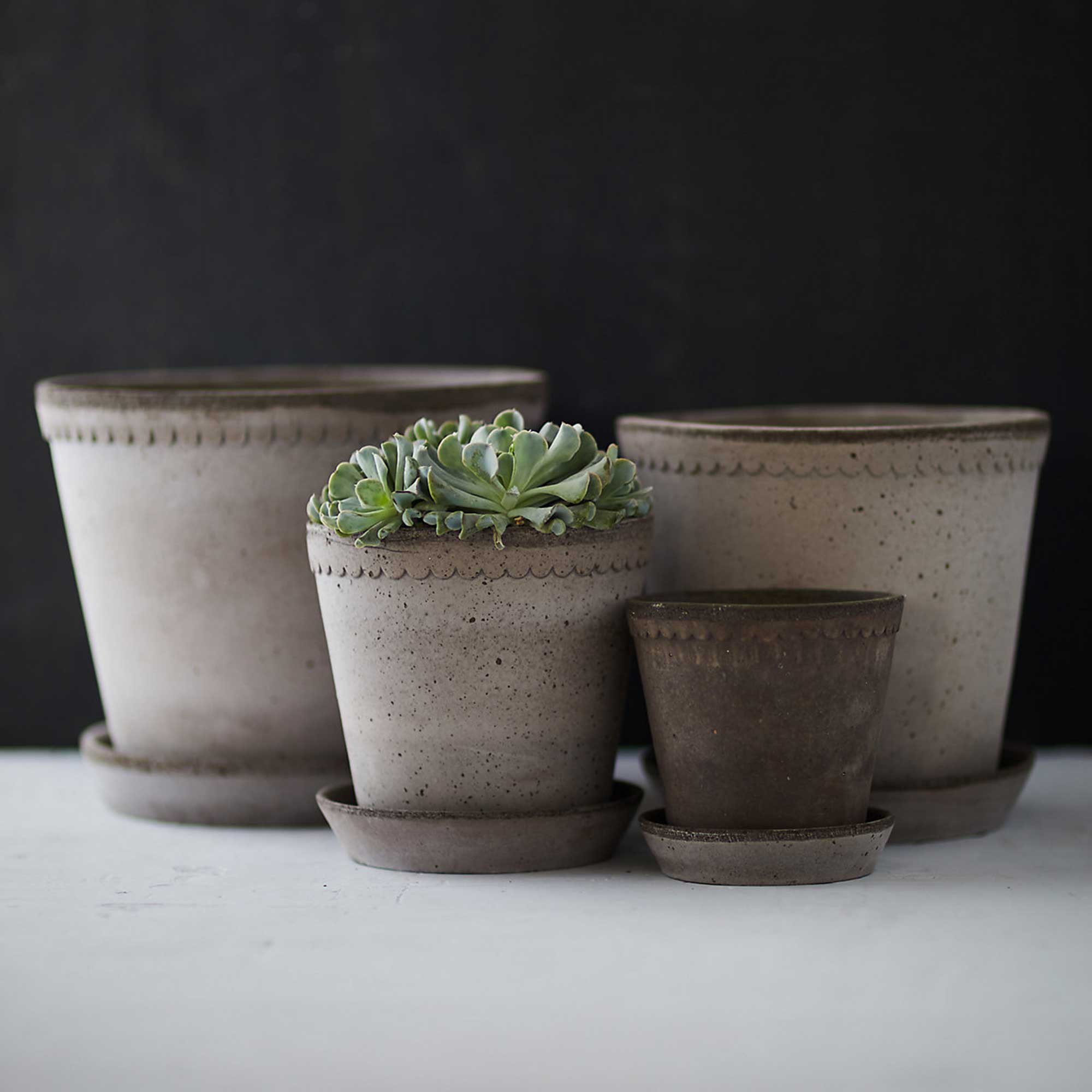
Made from Galestro terracotta clay, this elegantly handcrafted planter set has beautiful attention to detail. Scalloped edges along the rim and slight variations in texture make each piece truly unique. Perfect for a modern, pared-back scheme.
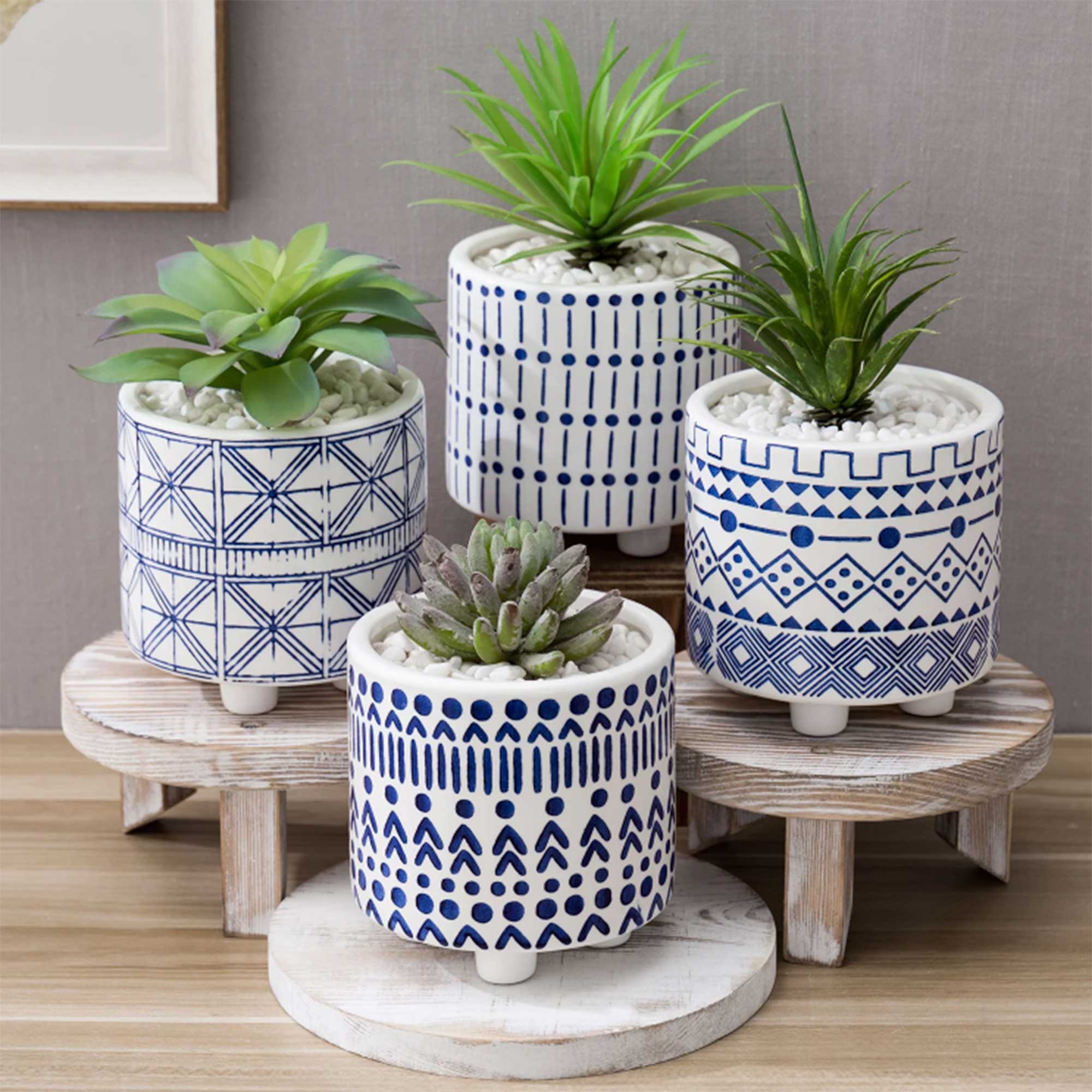
We love this jauntily patterned set of four neat ceramic planters with tiny legs at their base. While each blue and white geometric pattern is different, the four pieces cohere beautifully whether kept together or placed apart in the space.
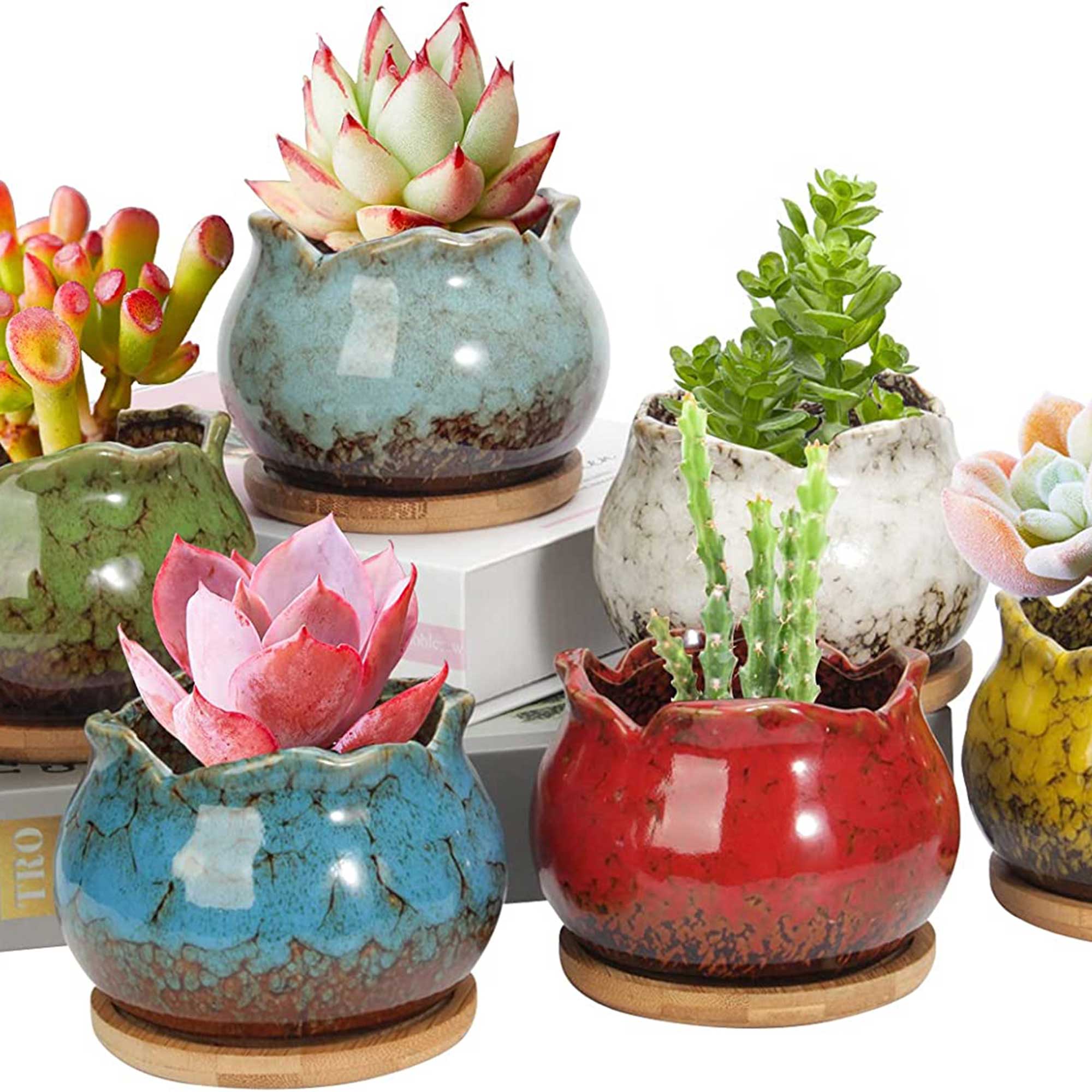
This colorful set of six glazed planters provides a great way to showcase your succulents or equally tiny potted plants. The ceramic has been painted with a slightly different glaze and color on each, and they come with their own bamboo tray to catch any excess water.
13. Add a touch of personality with quirky shaped planters
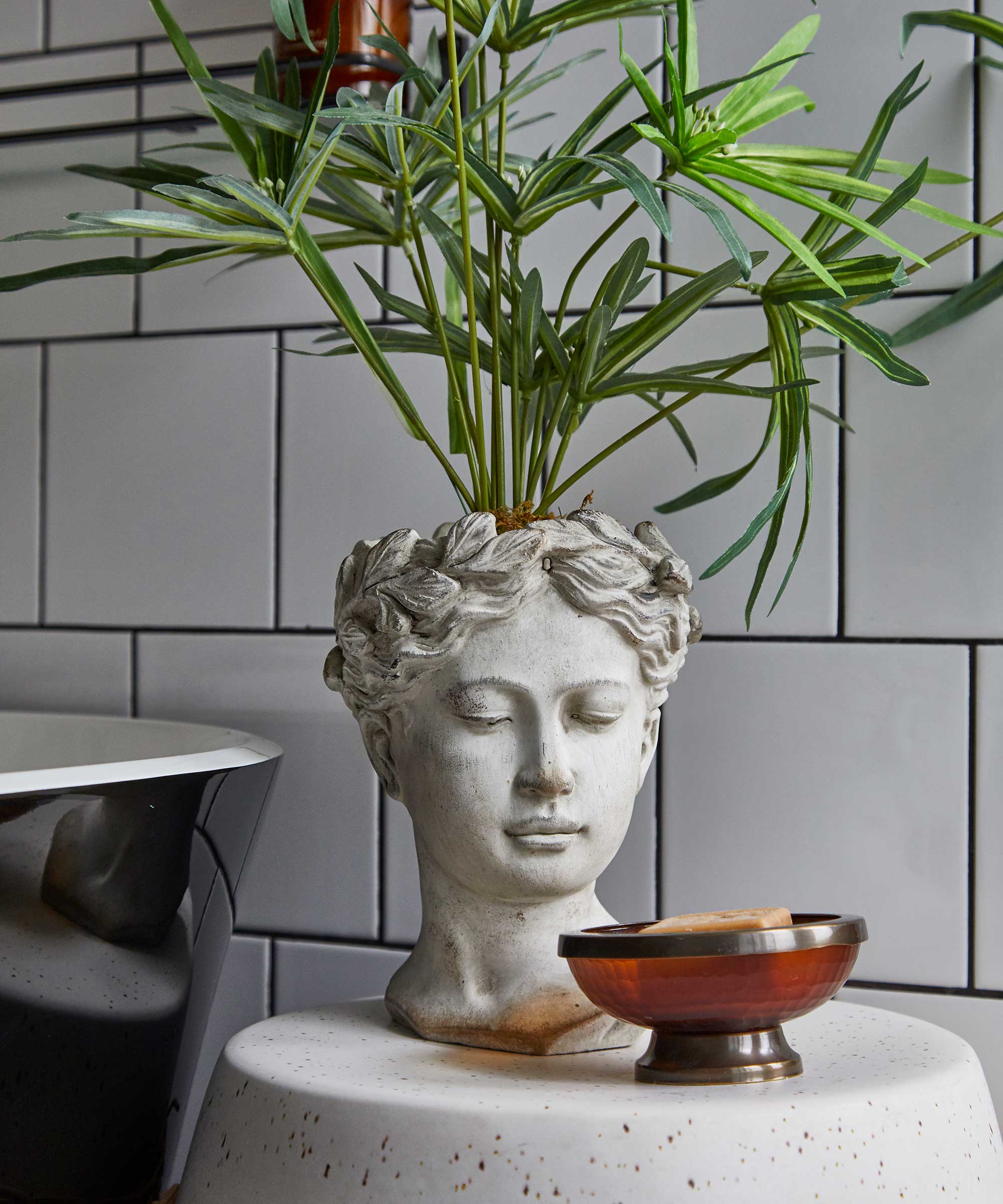
This pot brings a sense of fun to a scene
Sam Hood says: 'Planting indoors gives you a great opportunity to explore different potting options, from classic and traditional looks to more experimental ideas, such as quirky animal head pots.'
We love the idea of creating something unique with a quirkily shaped planter. Using interesting shapes like statues and animals can look perfect when sat on a high shelf or bookcase.
The types of indoor plants you fill them with can add another level of humor, too: a fishbone cactus or a spider plant placed in the head of a Grecian bust, for instance, will create the appearance of hair.
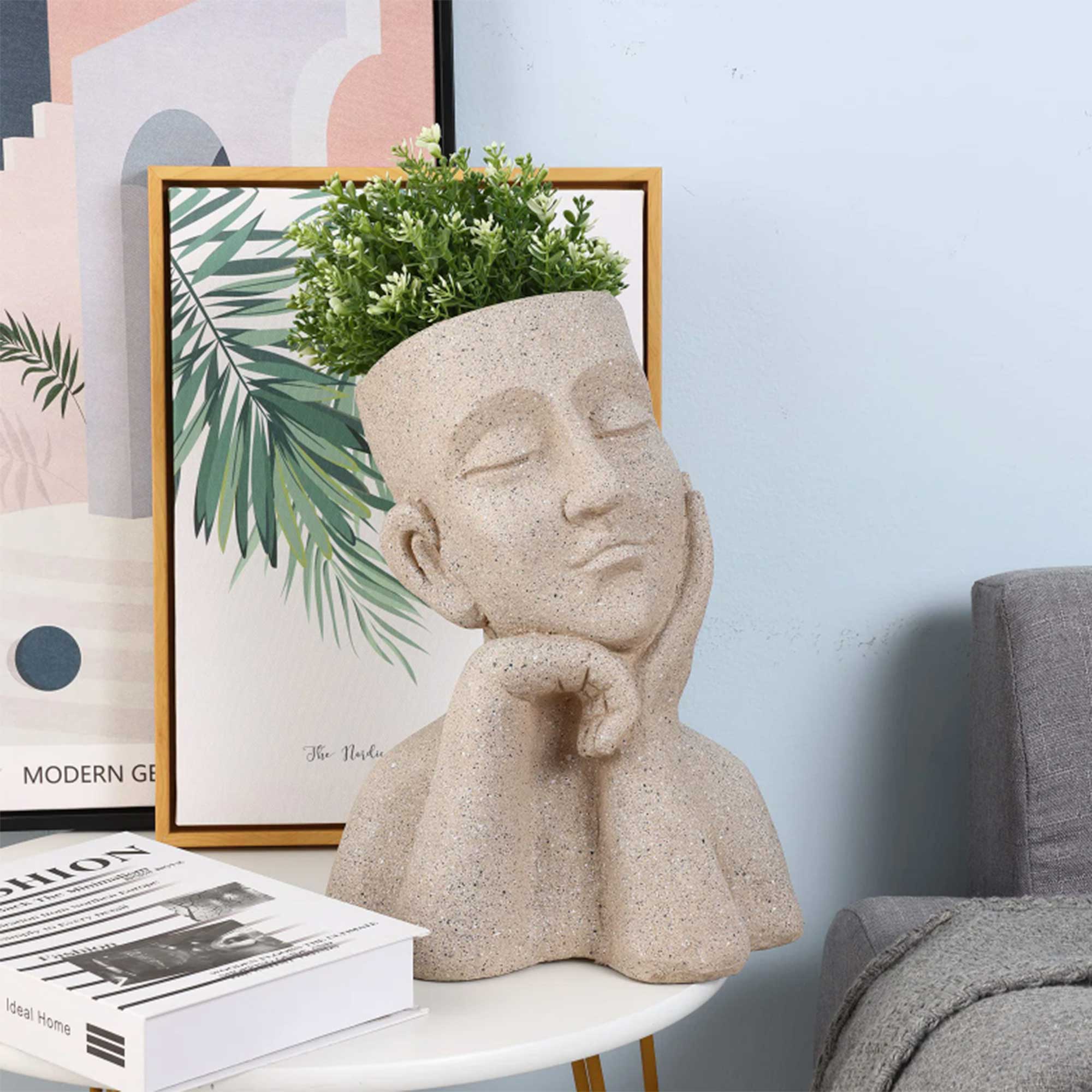
A thoughtful way to display your favorite houseplant is in this dreamy statue-style planter. We think it's a perfect companion for your at-home desk or bedside table.
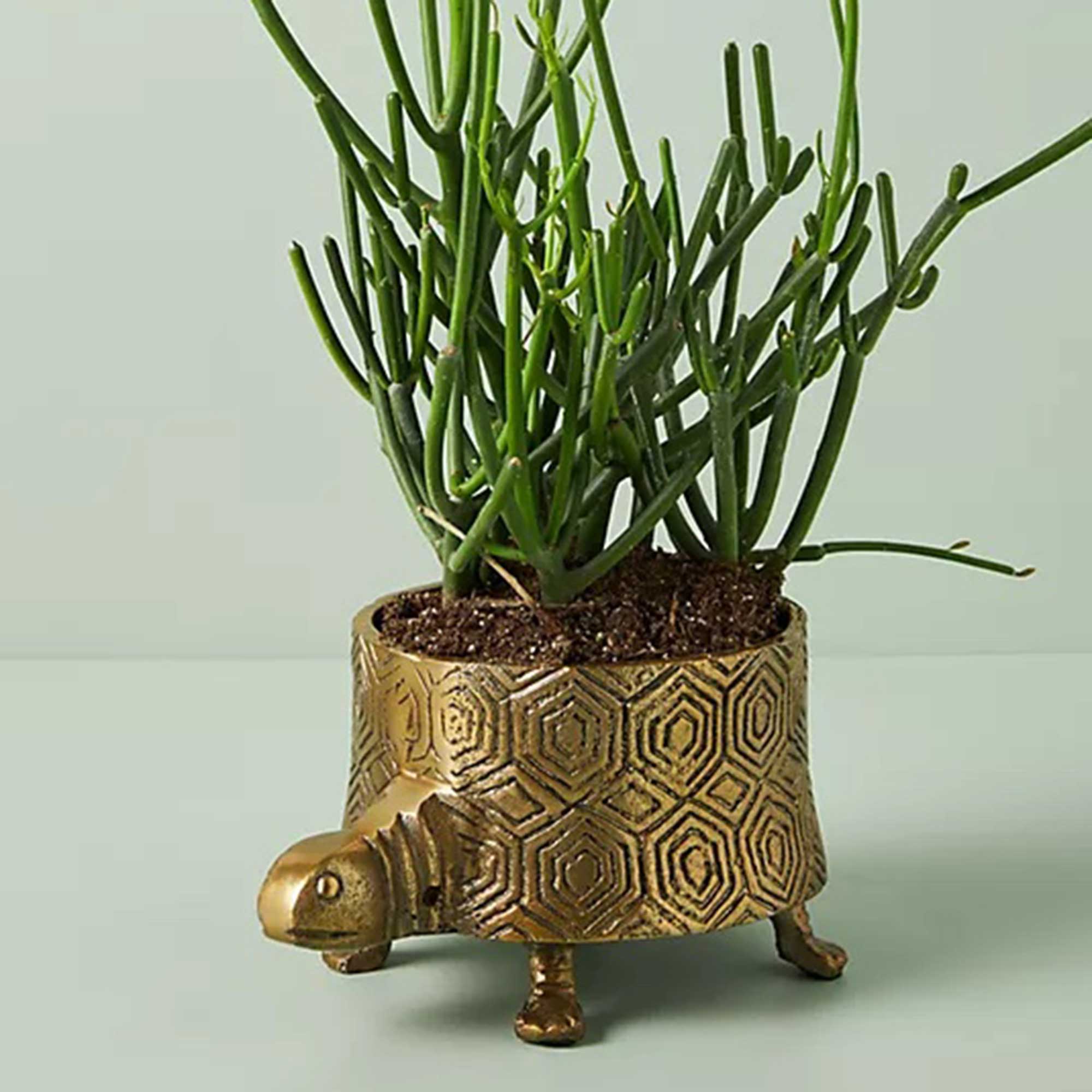
Made from aluminum, this fun design will give any room a dose of extra personality. Pair it with the giraffe and elephant from the same range for a truly cohesive display.
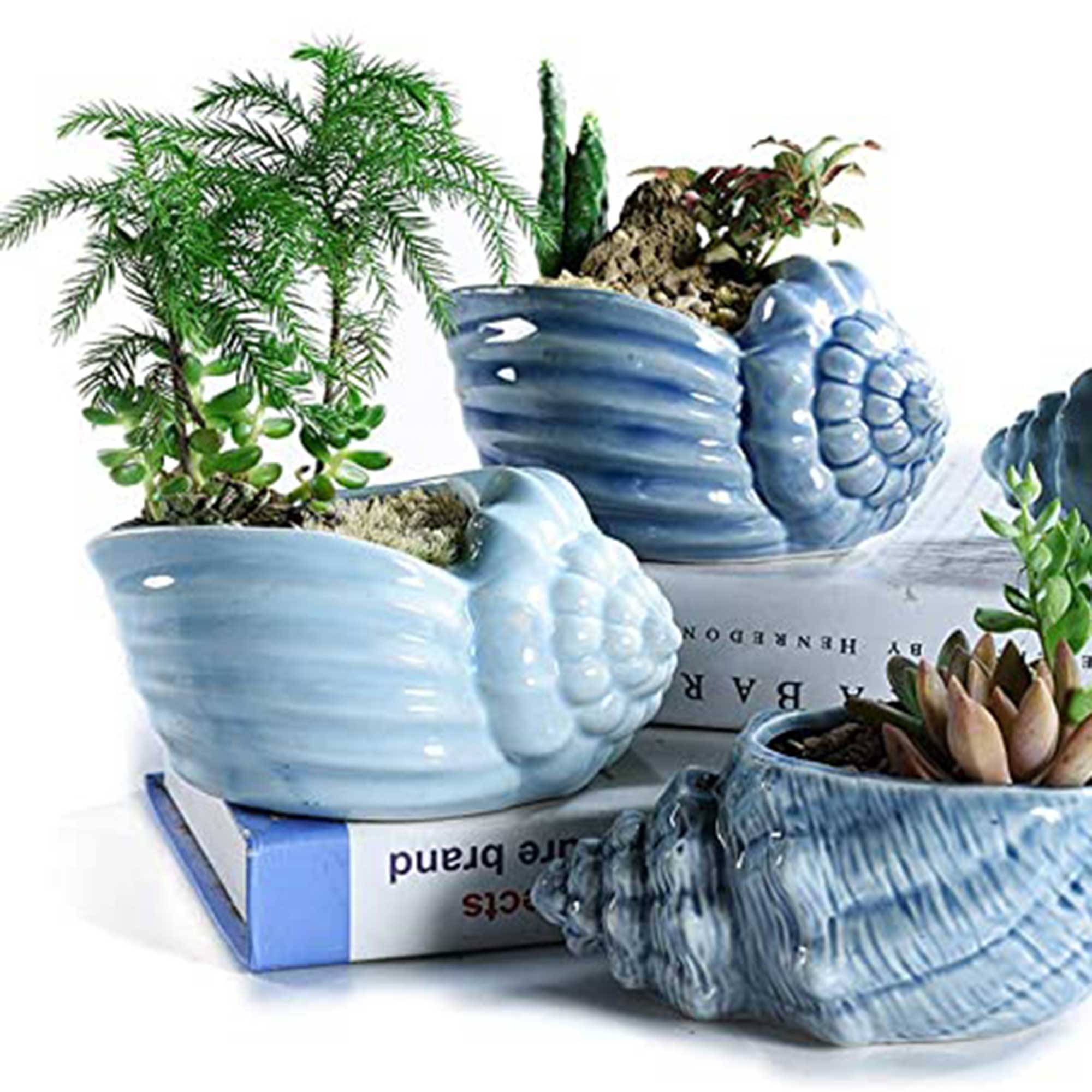
These beautiful conch shells are a wonderfully imaginative way to incorporate a sense of both ocean and greenery into your space. Fill with humidity-loving plants and place them near your shower or bath.
17. Create a homely aesthetic with natural fiber planters
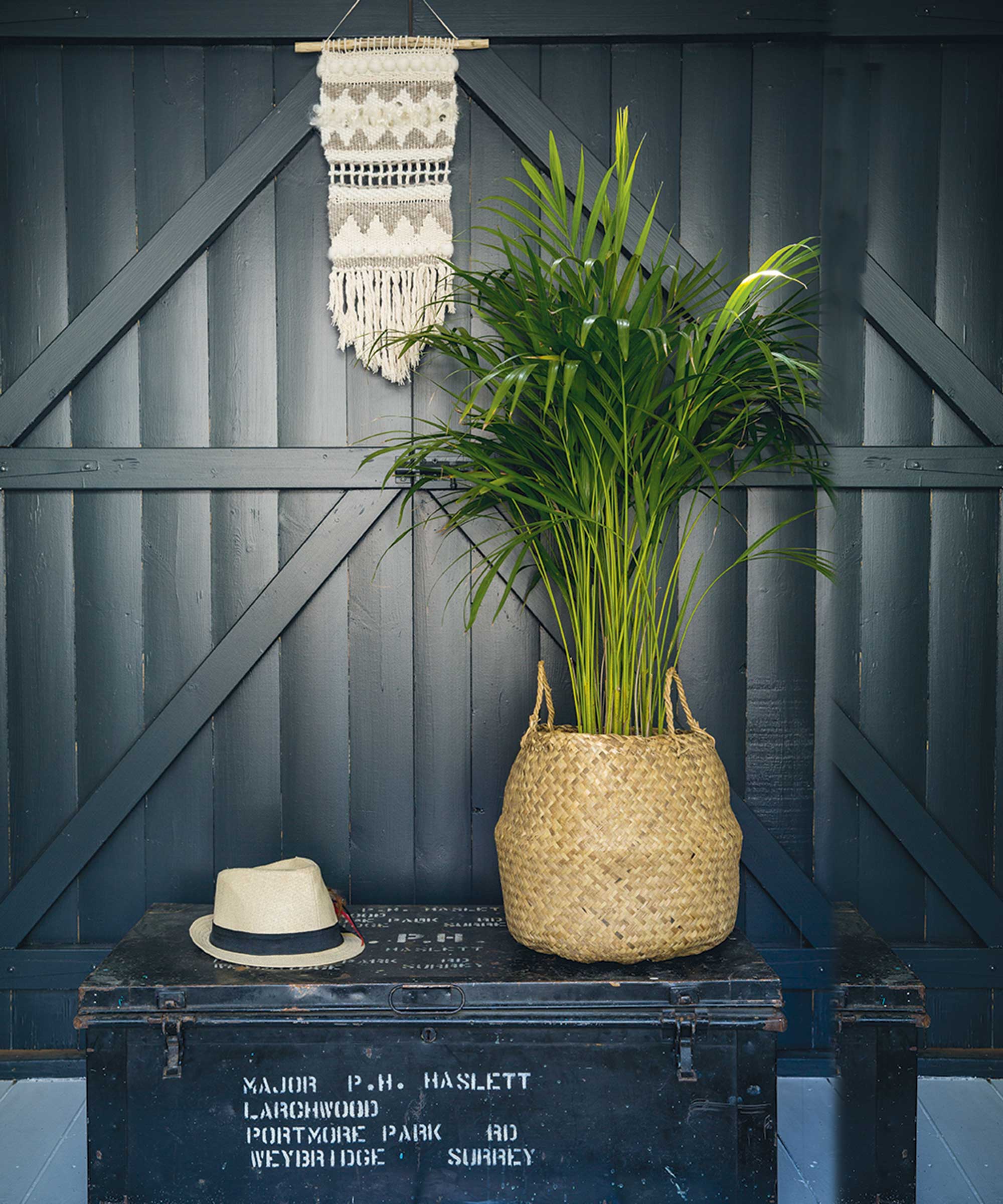
We love the contrasting textures in this modern setup
That Seventies trend of macrame is coming back in full force, and we love the focus on other natural fibers in our planters, too, like jute, rattan, wood, and wicker. Using these textures will give any indoor garden an effortlessly chic style.
Sam favors traditional earthenware. If you want something a little different to pottery, however, you could opt for other materials such as rattan, he says. 'A rattan pot looks more natural, and with its lighter color will work well with a Scandi interior style.'
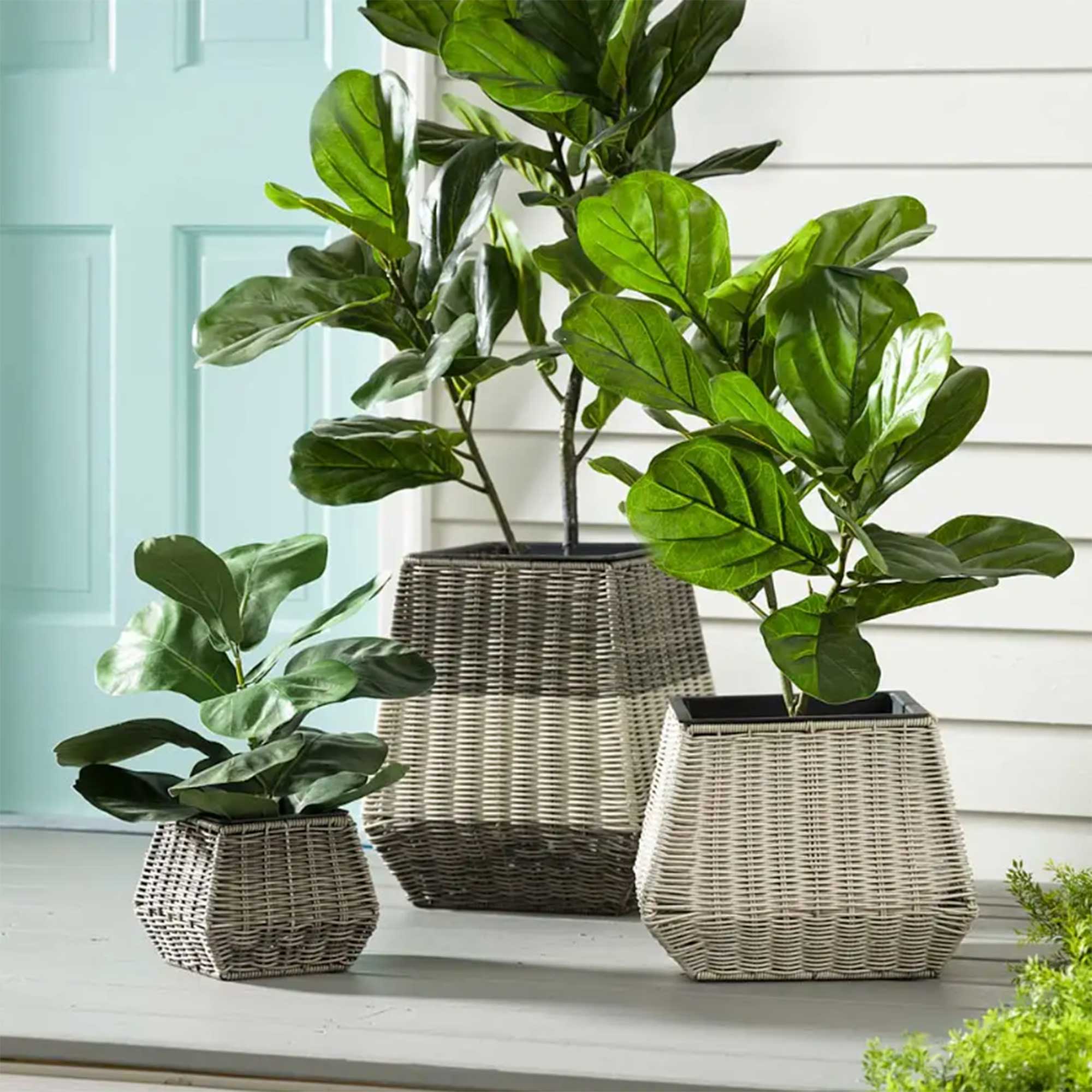
These sturdy and neutral-toned planters can be used both indoors and outdoors. When purchased as a set of three, the collective display makes even more of an impact.
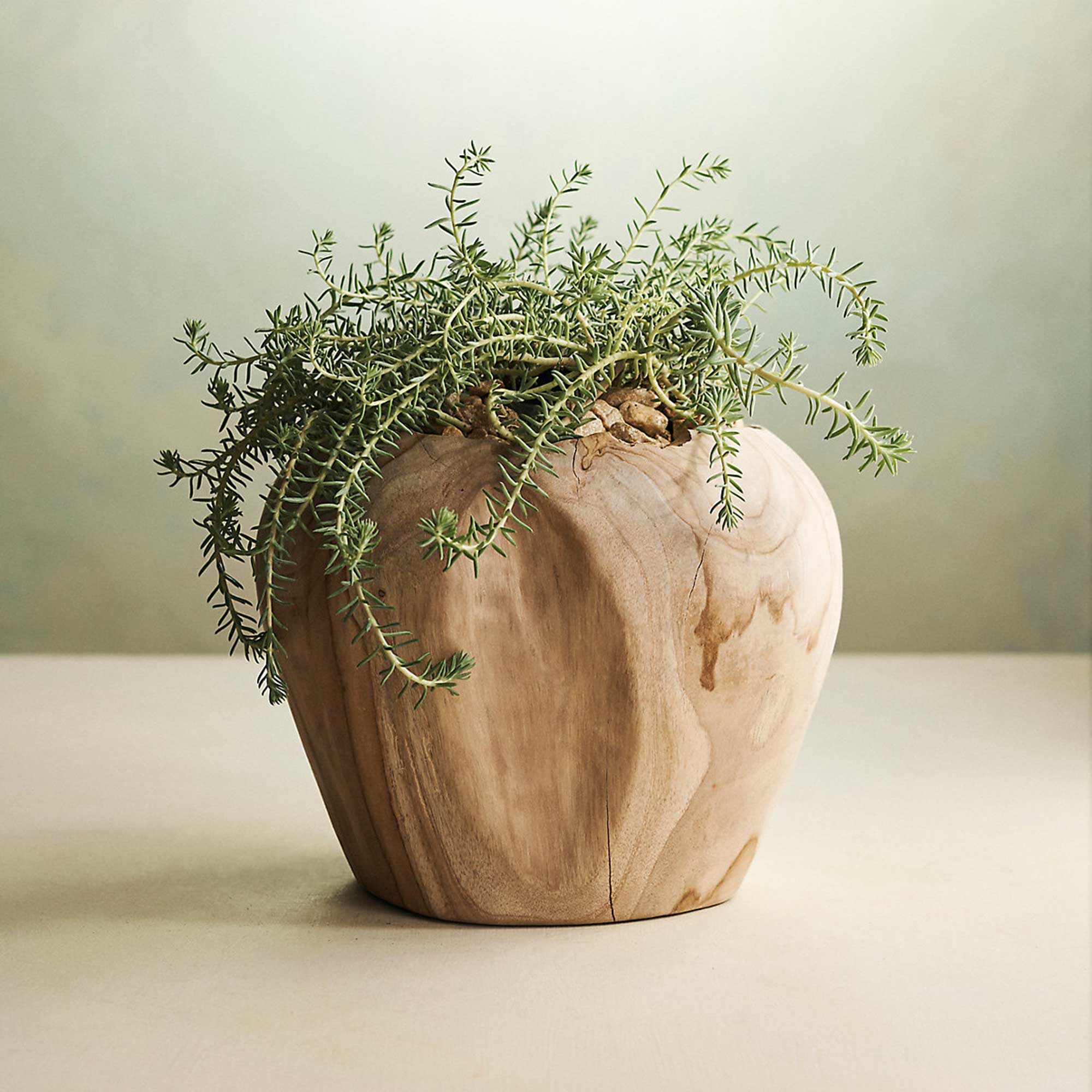
This natural teak pot has been minimally carved so as not to lose the wood's natural curves. At around nine inches tall, it easily makes a statement with or without a plant included.
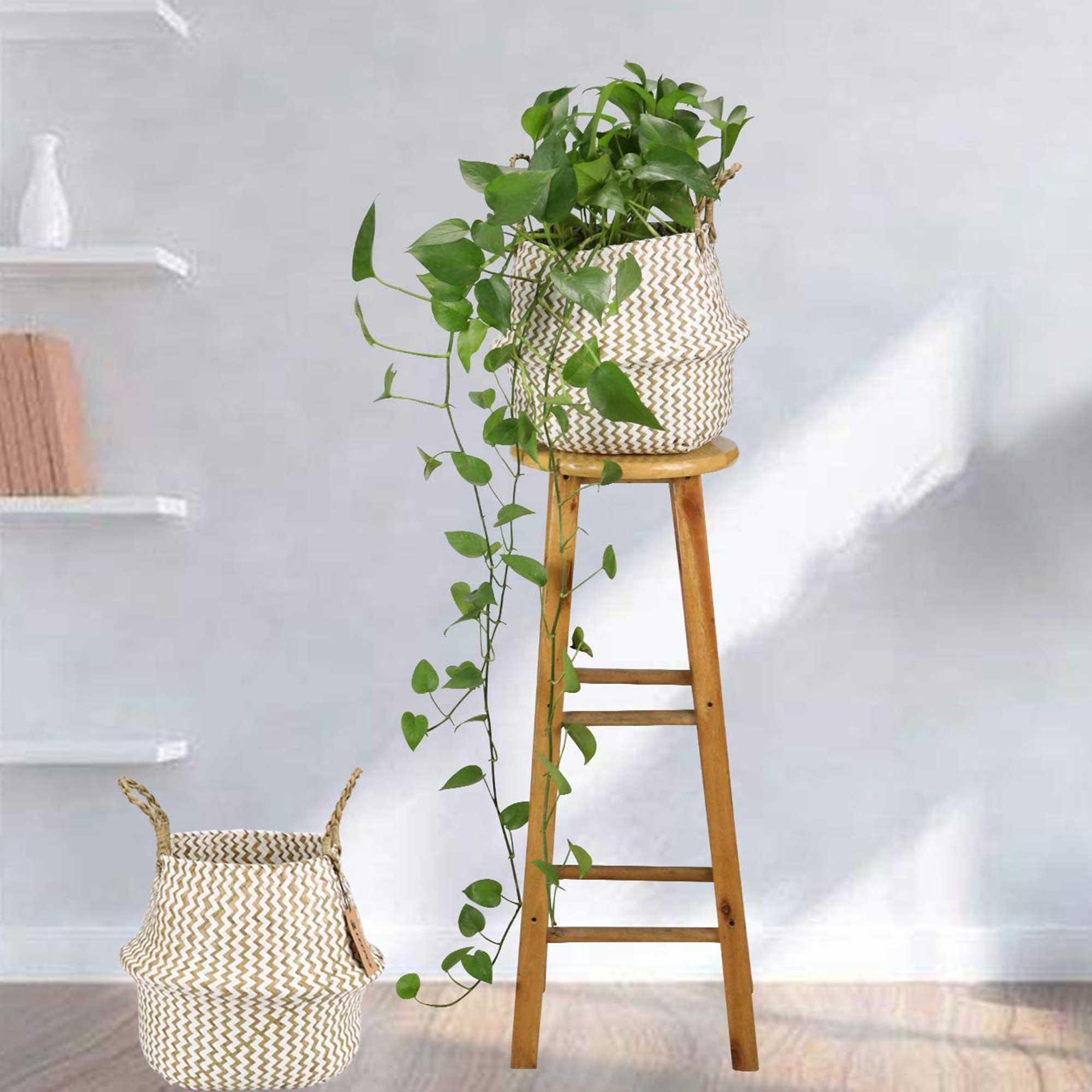
These seagrass baskets are wonderfully multipurpose all around the home, but we love using them for our houseplants in particular. Add a little plastic dish inside for any excess water.
21. Make your space shine with metallic plant pots
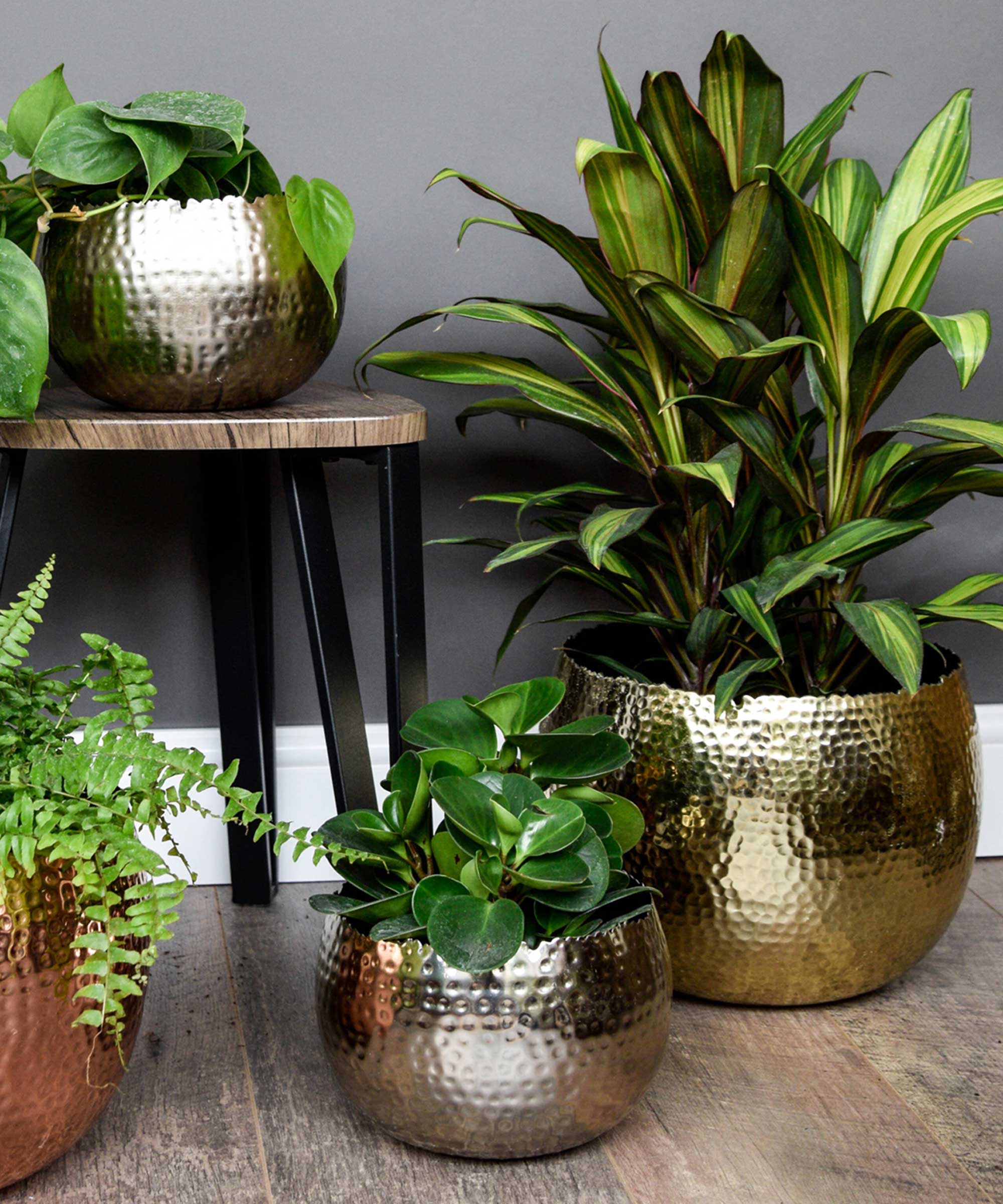
These planters from Lime Lace make a stunning statement
Keen to add a touch of bling to your space? Try weaving metallic finishes into your indoor planter ideas.
Nadia McCowan Hill from Wayfair suggests using brass planters – a perfect solution if you want to avoid anything overly glitzy.
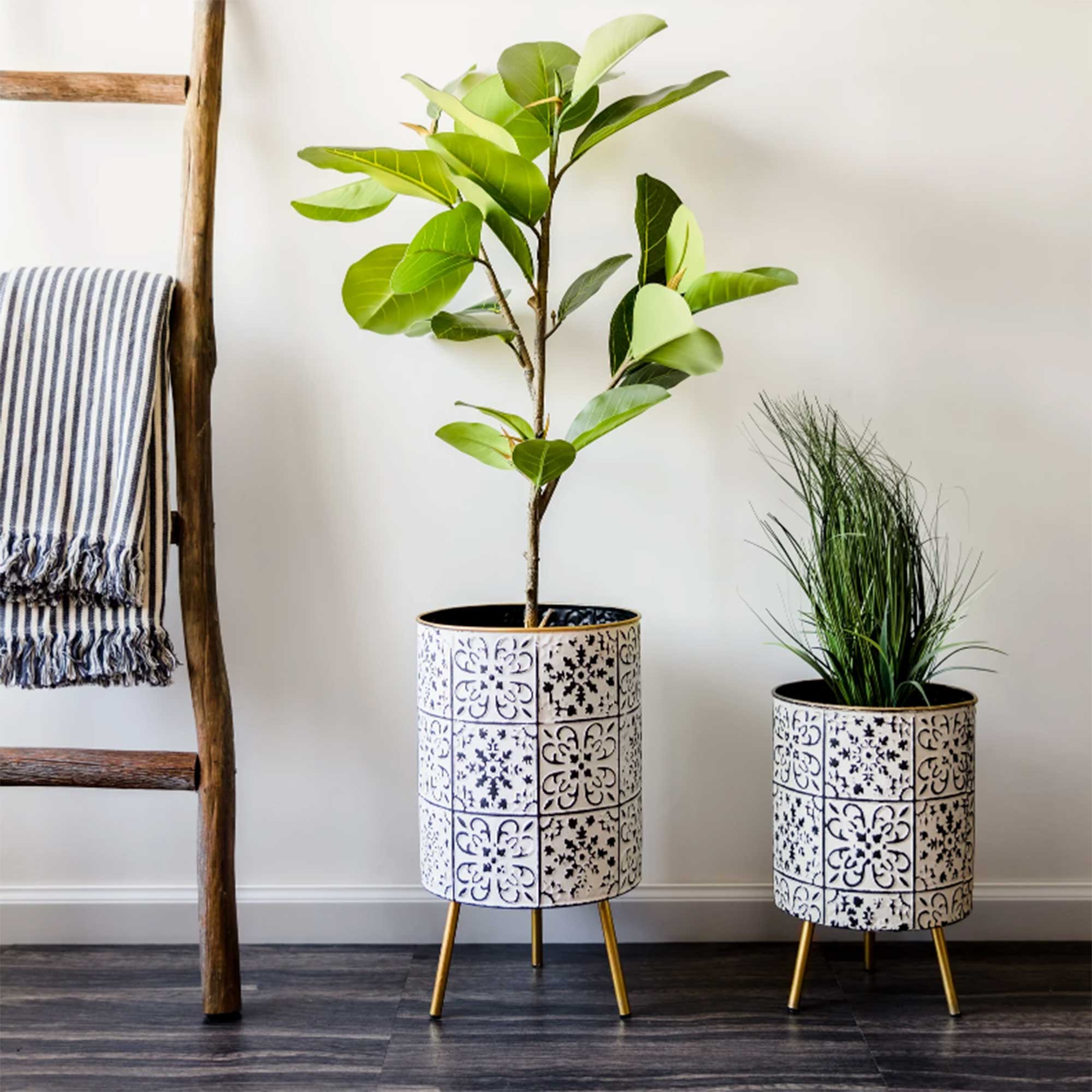
Geometrically patterned planters on gold legs are a striking feature in themselves, but when you add a flamboyant plant into the mix it lends an immediately organic dimension to an unloved corner, says Nadia.
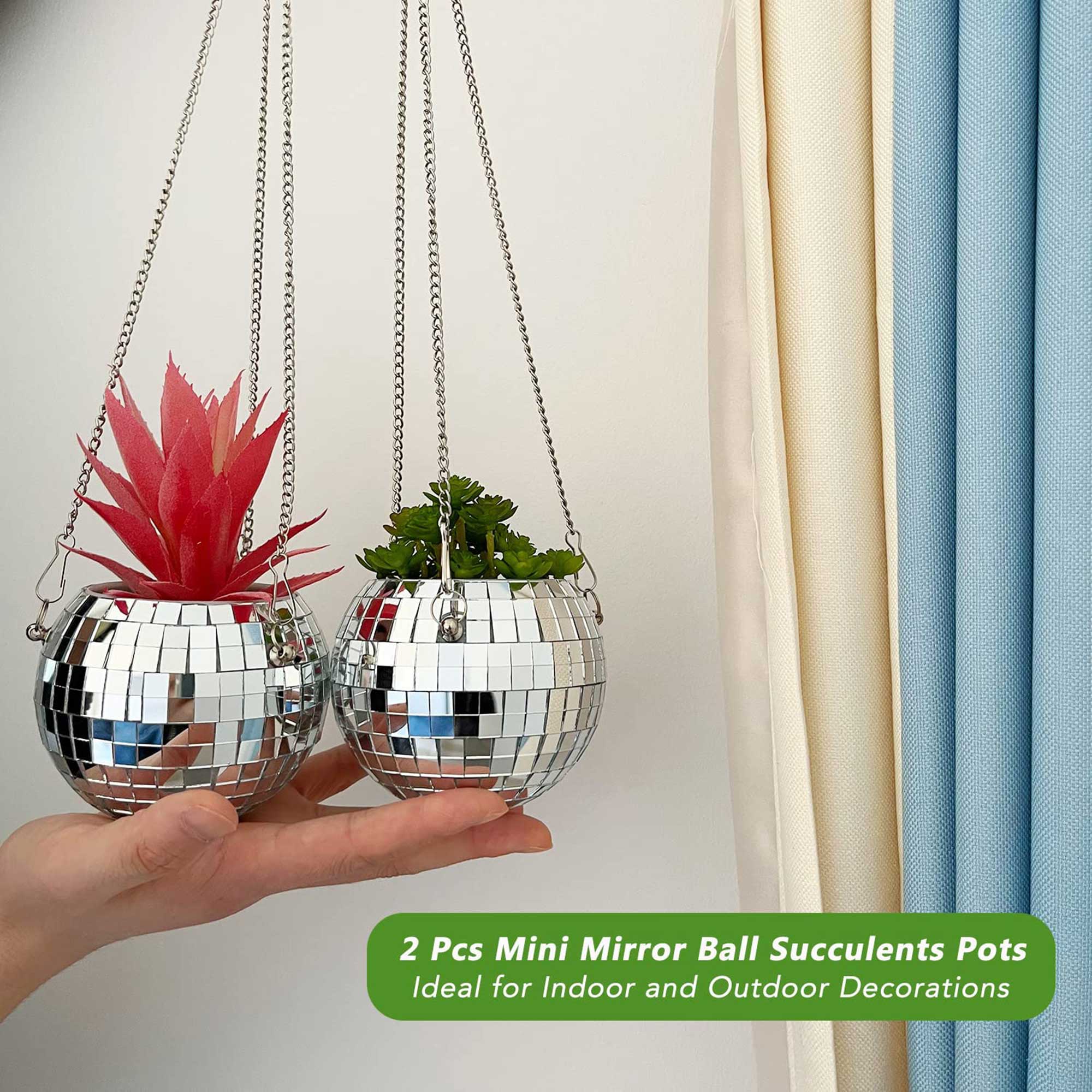
Get the party started with these adorable four-inch disco ball planters. They come with metal chains attached for easy hanging – place them near the window so they catch the sunlight.
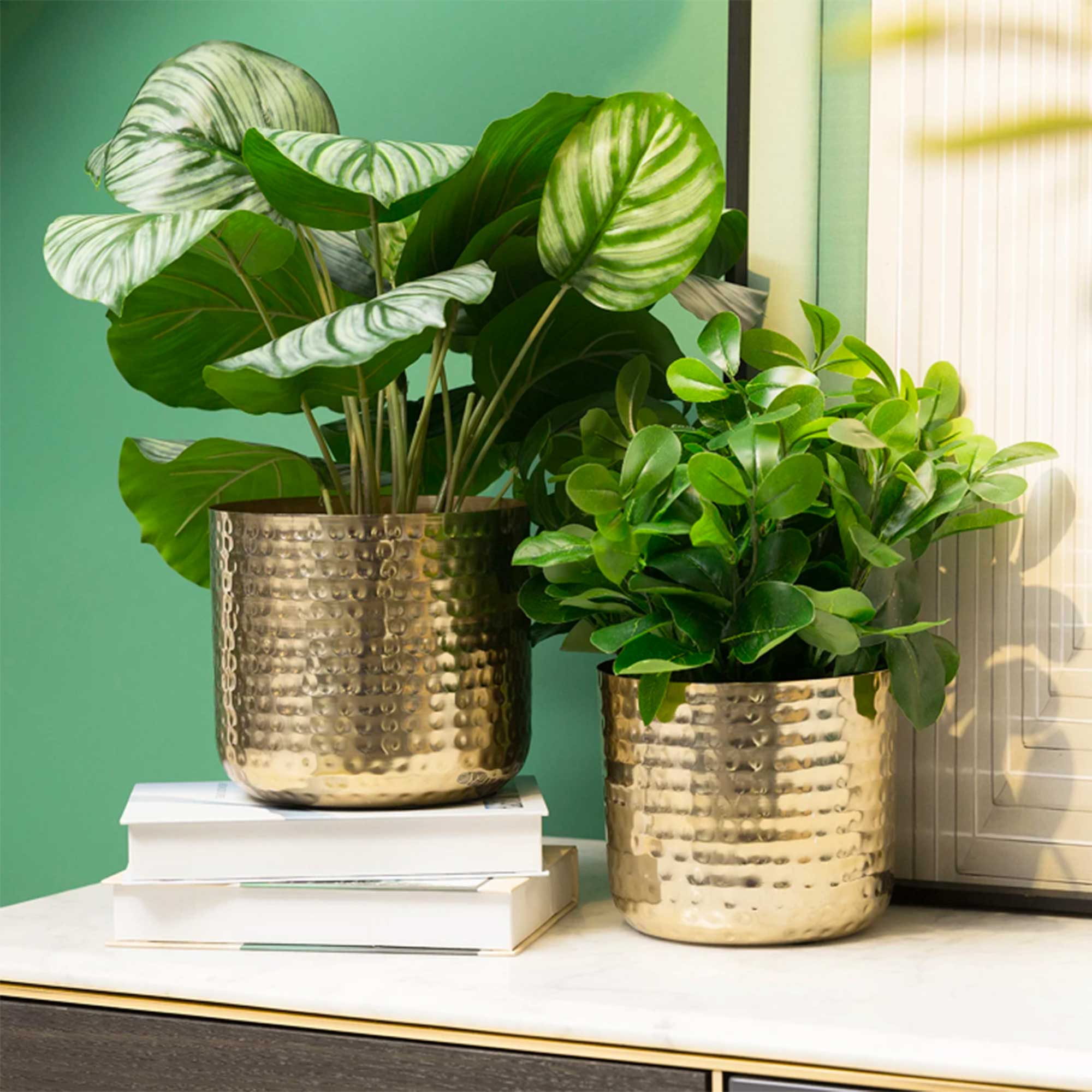
The hammered texture of these metal Wayfair planters adds a sense of vintage style to any corner of your home, while the brightly gleaming shine on them both is a great pairing with any deep-green-leaved plants. Try a peace lily or monstera for a true showstopper.

Freelance writer and author Flora Baker is a keen amateur gardener and houseplant enthusiast. Her small garden in South London is a constant work in progress as she gets to grips with snail prevention, DIY trellises and what to plant in shady spots overrun with ivy.
